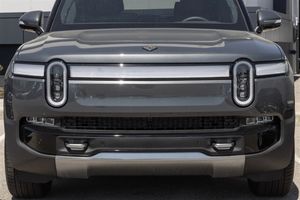
September 24, 2025 – In a surprising twist for global commodity markets, metallurgical coal, a cornerstone of traditional steelmaking, is experiencing an unexpected resurgence. This counter-trend defies the prevailing narrative of rapid decarbonization, as the ambitious vision for "green steel" encounters significant economic and technological headwinds. The immediate implication is a sustained demand for coking coal, bolstering the outlook for producers and challenging the timelines for a widespread shift to cleaner industrial practices, with profound effects reverberating across the steel industry and broader industrial commodities.
The current landscape paints a picture of stark contrasts: while environmental pressures push for cleaner production, the practical realities of cost, technology, and infrastructure are slowing the green transition. This delay provides a crucial window for metallurgical coal, underscoring its continued indispensability in meeting global steel demand, particularly in rapidly industrializing nations. Investors and industry stakeholders are now recalibrating expectations, acknowledging that the path to a carbon-neutral steel sector will be longer and more complex than initially forecast.
Green Steel's Stumbles Pave Way for Coal's Continued Reign
The narrative surrounding metallurgical coal has shifted dramatically. Just a few years ago, the commodity faced a grim future, overshadowed by aggressive decarbonization targets and the promise of "green steel" produced using hydrogen instead of coal. However, as of September 2025, the enthusiasm for a rapid transition has waned, replaced by a pragmatic acknowledgment of the immense challenges involved. Metallurgical coal prices, while volatile, are stabilizing and showing signs of a modest increase, projected to average around $220/tonne for 2025, after significant declines from their 2022 peaks.
Several critical factors contribute to this unexpected endurance. Foremost is the enduring reliance on traditional blast furnace-basic oxygen furnace (BF-BOF) steelmaking, which accounts for the vast majority of global steel production and is heavily dependent on metallurgical coal. Developing economies, notably India, are driving this trend. India's ambitious plans to nearly double its steelmaking capacity to 300 million tonnes by 2030 are predominantly predicated on the BF-BOF route, making it a primary growth engine for metallurgical coal demand. Conversely, China, the world's largest steel producer, anticipates a decline in coking coal imports and consumption by 2029 and 2035, respectively, due to challenges in its real estate and steel sectors. This regional divergence highlights the nuanced nature of global demand.
The primary impediment to green steel adoption remains its prohibitive production costs. Green hydrogen, essential for replacing coal, saw its costs increase by 35% in two years, reaching $3.74–$11.70 per kilogram in 2024. In Europe, these costs often exceed €6/kg H2, making decarbonization investments economically unfeasible for many. Energy expenses for new hydrogen-based Direct Reduced Iron (DRI) and Electric Arc Furnace (EAF) processes can exceed 40% of production costs, significantly higher than traditional methods. This economic reality has led to a dramatic 57% fall in global investment in clean steel projects in 2024, hitting a six-year low. Furthermore, technological immaturity, underdeveloped low-carbon hydrogen infrastructure, and policy uncertainties—including stalled legislation and potential shifts in government priorities—are all contributing to a substantial slowdown in the green steel transition, effectively extending the lifespan of metallurgical coal in the global energy mix.
Winners and Losers: Companies Navigating the Coal Conundrum
The sustained demand for metallurgical coal presents a mixed bag for public companies, creating clear winners among traditional coal miners and challenges for steelmakers striving for rapid decarbonization. Companies with significant metallurgical coal assets are poised to benefit from this extended period of relevance.
Major metallurgical coal producers such as BHP Group (ASX: BHP), Teck Resources (TSX: TECK), and Arch Resources (NYSE: ARCH) are likely to see their metallurgical coal segments continue to generate substantial revenue. These companies, which have often been pressured to divest or scale back coal operations, may find renewed investor interest as the market acknowledges the commodity's persistent role. For instance, BHP, a global mining giant, is a major producer of coking coal, and sustained demand from India and other developing nations will directly bolster its profits from this segment. Similarly, Teck Resources, with its significant coking coal operations in Canada, could leverage this market dynamic to support its broader diversification strategies. Arch Resources, a prominent U.S. producer, is also well-positioned to capitalize on stable-to-rising prices.
On the other side, steel companies that have heavily invested in or publicly committed to aggressive green steel timelines, such as ArcelorMittal (NYSE: MT) and ThyssenKrupp (ETR: TKA), face a more complex scenario. While they remain committed to decarbonization, the slower-than-anticipated rollout of green technologies means their significant capital expenditures in hydrogen-based DRI plants and EAFs might take longer to yield returns. These companies may need to balance their green ambitions with the continued operational necessity of traditional, coal-dependent blast furnaces, potentially extending the operational life of these assets. This could lead to higher compliance costs in regions with stringent carbon pricing, or a competitive disadvantage against producers in regions with less pressure to decarbonize quickly. The high "green premium" that many customers are unwilling to pay also complicates their market strategy for low-emission steel. Conversely, steelmakers in regions like India, such as Tata Steel (NSE: TATASTEEL) and Jindal Steel & Power (NSE: JINDALSTEL), which are expanding using traditional BF-BOF technology, might find themselves with a cost advantage in the near to medium term, benefiting from lower capital costs and established supply chains for metallurgical coal.
Wider Significance: A Reality Check for Industrial Decarbonization
The resurgence of metallurgical coal serves as a potent reality check for the broader industrial decarbonization movement. It highlights the formidable chasm between ambitious environmental targets and the practical, economic, and technological hurdles of transitioning heavy industries. This event underscores that while political will and public sentiment lean towards green solutions, the sheer scale and complexity of industries like steelmaking mean that foundational shifts require immense capital, mature technologies, and robust infrastructure that are not yet fully in place.
This situation has significant ripple effects. For other industrial commodities, particularly those tied to traditional manufacturing processes, it suggests a potentially longer runway than previously assumed. Industries reliant on high-temperature processes or specific material properties that current green alternatives cannot yet replicate efficiently may also see their conventional inputs maintain relevance for longer. It also intensifies the debate around energy security and resource independence, as nations weigh the benefits of domestic coal production against the costs of importing green alternatives or the risks of relying on nascent technologies. Historically, transitions in foundational industries have always been protracted, often spanning decades. The current scenario with metallurgical coal mirrors past energy transitions where new sources gradually supplemented, rather than immediately replaced, established ones. This event forces a re-evaluation of decarbonization roadmaps, emphasizing incremental improvements and pragmatic transitions over revolutionary leaps.
Regulatory and policy implications are also profound. Governments that have set aggressive decarbonization targets for steel may face pressure to revise their timelines or increase subsidies for green technologies to accelerate adoption. There could be increased scrutiny on carbon border adjustment mechanisms (CBAMs) and other trade policies designed to level the playing field for greener products, as the cost disparity between traditional and green steel widens. The continued reliance on metallurgical coal also presents a challenge to global climate commitments, potentially requiring greater investment in carbon capture and storage (CCS) technologies for existing blast furnaces as a bridging solution, rather than relying solely on direct replacement.
What Comes Next: Navigating a Pragmatic Transition
Looking ahead, the trajectory for metallurgical coal and the steel industry will be defined by a delicate balance between persistent economic realities and accelerating innovation in green technologies. In the short term, metallurgical coal prices are likely to remain volatile but generally supported, influenced by global economic growth, particularly infrastructure spending in emerging markets, and any further delays or setbacks in green steel projects. Investors should anticipate continued price fluctuations, making strategic sourcing and hedging crucial for steelmakers.
Over the long term, the market will witness a dual track. Traditional steelmaking using metallurgical coal will persist, especially for high-strength grades and in regions with abundant coal resources and less stringent environmental regulations. However, the pressure to decarbonize will not disappear. This will spur continued, albeit perhaps slower, investment in green steel technologies. The key will be the pace at which green hydrogen costs decline, renewable energy infrastructure expands, and innovative carbon capture solutions mature. Breakthroughs in these areas could accelerate the transition, but until then, metallurgical coal retains its strategic importance.
Potential strategic pivots for steelmakers will involve a hybrid approach: optimizing existing coal-based operations for efficiency and lower emissions (e.g., through CCS or increased scrap usage) while gradually scaling up green steel capacity. Market opportunities will emerge for companies that can bridge this gap, offering technologies that reduce the carbon footprint of traditional steel or provide cost-effective transitional solutions. Challenges will include navigating evolving regulatory landscapes, securing financing for both traditional and green investments, and managing public perception. Scenarios range from a prolonged "plateau" where coal remains dominant for another decade, to a more rapid, but still gradual, shift if technological advancements and policy support align. Investors should closely monitor developments in hydrogen production costs, carbon capture technology, and the actual deployment rates of green steel projects to gauge the true pace of change.
Comprehensive Wrap-Up: Coal's Enduring Role and Investor Vigilance
The resurgence of metallurgical coal underscores a fundamental truth about industrial transitions: they are complex, costly, and rarely linear. As of September 2025, the fading immediate ambition for "green steel" is not a rejection of decarbonization, but rather a pragmatic acknowledgment of the immense economic and technological hurdles involved. Key takeaways include the sustained demand for metallurgical coal driven by traditional steelmaking, particularly in India, and the significant challenges facing green steel adoption, including prohibitive costs, technological immaturity, and insufficient infrastructure and investment.
Moving forward, the market will be characterized by a protracted transition. Metallurgical coal will maintain a critical role in global steel production for the foreseeable future, serving as an essential input for high-strength steel and a cost-effective option for developing economies. This assessment necessitates a recalibration of investor expectations for both coal miners and steel producers. Companies with robust metallurgical coal assets are likely to experience continued stability, while steelmakers must strategically balance their decarbonization goals with operational realities and market demand for cost-effective steel.
Investors should closely watch several key indicators in the coming months and years: the trajectory of green hydrogen production costs, the deployment of large-scale renewable energy projects, government policy shifts regarding industrial decarbonization, and the actual rate of investment in new green steel capacity. The interplay of these factors will ultimately determine the long-term fate of metallurgical coal. While the world's commitment to a greener future remains, the journey will be punctuated by pragmatic detours, with metallurgical coal currently enjoying an unexpected, but vital, extended run.
This content is intended for informational purposes only and is not financial advice.





